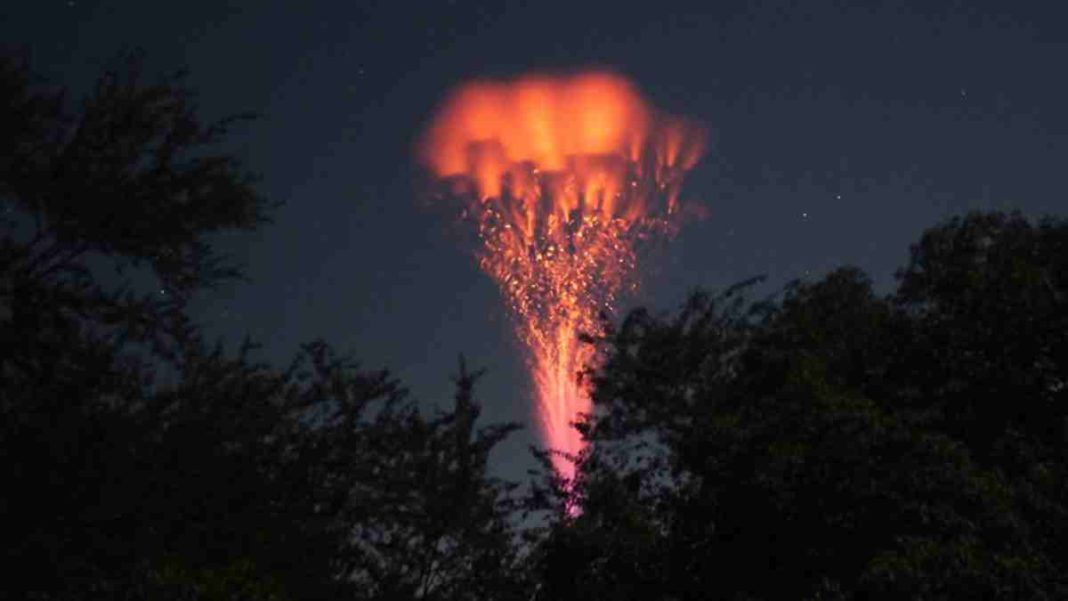PUERTO RICO: Puerto Rico-based photographer Frankie Lucena was capturing images of a passing storm system, which would soon evolve into the ongoing Hurricane Franklin, when he witnessed a rare natural phenomenon: Several enormous bolts of lightning shot straight upward out of a storm cloud and halted just below the edge of space.
Upward-moving lightning bolts, known as gigantic jets, are the rarest and most powerful type of lightning, occurring as infrequently as 1,000 times a year and carrying more than 50 times the power of a typical lightning bolt.
These inverted bolts can ascend more than 50 miles (80 kilometers) above Earth’s surface, reaching the bottom of the ionosphere, the extensive layer of electrically charged particles where Earth’s atmosphere meets outer space. (Space technically commences at 62 miles, or 100 km, above sea level, while the ionosphere extends from approximately 50 to 400 miles, or 80 to 640 km, above sea level.)
Though rare, gigantic jets are not an uncommon occurrence during Atlantic hurricane season, with reports most frequent in tropical regions, particularly during rapidly intensifying tropical storms like Franklin, as per an August 2022 study in the journal Science Advances.
Scientists have only been aware of this phenomenon for about 20 years, and many aspects of it remain a mystery, including why the bolts shoot upward into the sky instead of striking downward to the ground.
The colossal upward-flying bolts might result from some form of obstruction preventing lightning from escaping through the cloud’s underside, as suggested by the authors of the 2022 study. However, the precise mechanism remains unknown.
This year may offer more opportunities to observe and study these bolts, as the Atlantic hurricane season is now in full swing.
Franklin has since moved north toward Bermuda and intensified into the first major hurricane of the 2023 season, according to the National Weather Service.
While experts caution about potentially life-threatening rip currents along the East Coast of the United States, it’s important to note that Hurricane Franklin is not currently projected to make landfall.
On August 30, Hurricane Idalia made landfall in Florida as a Category 2 storm, resulting in at least two confirmed deaths.
The storm is being fueled by off-the-charts ocean temperatures, which have broken every record since satellite measurements began in the 1980s.
These record-high temperatures have arisen from a combination of human-caused climate change and an El Niño event, which is forecasted to significantly surpass the last strong event in early 2016.
Also Read: Hurricane Idalia Ravages Florida and Shifts Fury to Georgia



